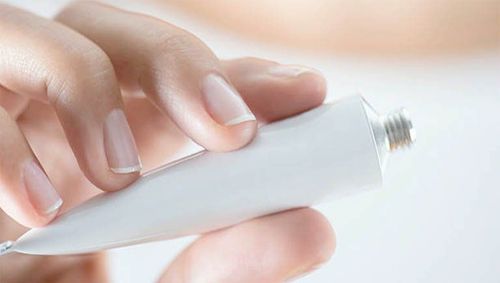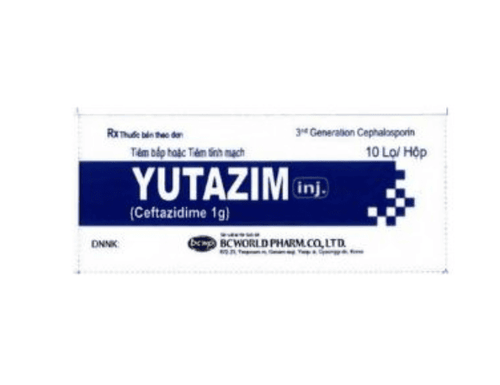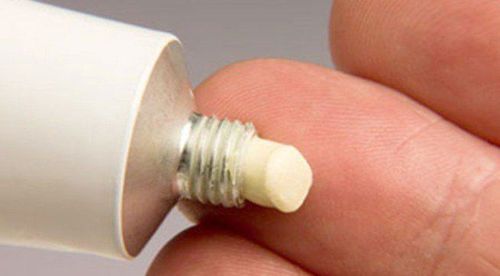This is an automatically translated article.
Currently there are many types of antibiotics on the drug market, including Clintaxin. Let's find out more clearly the uses of Clintaxin, what Clintaxin treats, how Clintaxin is used... right here.
1. What is Clintaxin?
Clintaxin is a prescription antibiotic. Clintaxin is manufactured by Strides Arcolab., Ltd - INDIA, under the registration number VN - 14454 - 12.
Clintaxin has the main ingredients including the active ingredient Clindamycin phosphate 600mg/4ml Clindamycin. Packing Clintaxin box of 5 ampoules x 4ml injection.
2. Uses of Clintaxin
In the drug Clintaxin has the main active ingredient Clindamycin - an antibiotic of the Lincosamide group. Clintaxin's bactericidal mechanism is to bind to the 50s ribosomal subunit, inhibit protein synthesis and kill bacteria.
Uses Clintaxin is bacteriostatic at low concentrations, bactericidal at high concentrations. The mechanism of bacterial resistance to Clintaxin is methylation of the bacterial 50s ribosomal RNA subunit. The resistance pattern of Clindamycin is usually plasmid mediated.
There is cross-resistance between Clindamycin - the active ingredient in Clintaxin and Erythromycin because the effects of these two active ingredients are on bacterial ribosomes.
In vitro effects of Clintaxin against bacteria including:
Staphylococcus aureus; Staphylococcus epidermidis; Streptococcus (except S. faecalis); Pneumococcus; Bacteroides(B. fragilis); Fusobacterium spp; Propionibacterium; Eubacterium; Actinomyces spp; Peptococcus and peptostreptococcus spp; Clostridium perfringens (except C. sporogenes and C. tertium). Chlamydia trachomatis; Toxoplasma gondii; Plasmodium falciparum; Pneumocystis carinii; Gardnerella vaginalis.; Mycoplasma brominn; Streptococcus faecalis; Norcardia sp; Neisseria meningitidis; Staphylococcus aureus resistant to methicillin; Haemophilus influenzae; ... Although Clindamycin phosphate – the active ingredient in Clintaxin has no in vitro activity. However, rapid in vitro hydrolysis converts the compound to the antibacterial form of clindamycin.
Uses Clintaxin is used to kill bacteria thanks to the broad antibacterial activity in vitro described in the leaflet.
3. Indications Clintaxin
Clintaxin is indicated in the following cases:
Pneumonia; Pleurisy; Lung abscess; Skin infections; Endometriosis ; Pelvic cellulitis; Vaginal ring infection; Abscess of uterus and ovaries; Peritonitis ; Abdominal abscess; Septicemia; Acute osteomyelitis; Other infections in bones and joints; ... Clintaxin drugs are used as indicated to achieve effective
4. Dosage - How to take Clintaxin
Clintaxin administered by intramuscular/intravenous route by medical staff. Dose of Clintaxin as prescribed by a doctor/pharmacist, specifically:
Severe infections: Use Clintaxin at a dose of 600-1200mg/day x 2-4 times; More severe infections: Clintaxin dose 1200-2700mg/day x 2-4 times; In severe infections, the dose of Clintaxin can be increased according to the instructions. If the infection is life-threatening, the dose may be increased up to 4800 mg/day intravenously.
Clintaxin can be given as a rapid intravenous infusion of the first dose, then a continuous intravenous infusion in the following doses:
Over 4μg/ml 10mg Clintaxin/min for 30 minutes 0.75mg Clintaxin/min; Over 5μg/ml 15mg Clintaxin/min for 30 minutes 1.00mg Clintaxin/min; Over 6μg/ml 20mg Clintaxin/min for 30 minutes 1.25mg Clintaxin/min; For infants over 1 month, dose according to kg body weight. Specifically, use Clintaxin 15-20mg/kg body weight/day x 3-4/times.
For children from 1 month to 16 years old, use Clintaxin at a dose of 20-40mg/kg body weight/day x 3-4 times.
If infection is caused by beta-hemolytic Streptococcus, treatment with Clintaxin should be continued for at least 10 days.
Dilute the infusion rate when administered intravenously. The concentration of Clintaxin in the diluent should not exceed 18mg/ml. Clintaxin infusion rate should not exceed 30mg/min.
After dilution, Clintaxin should be kept stable for 16 days at room temperature. 32 days if refrigerated from 4 degrees. 8 weeks if in frozen condition
5. Contraindications Clintaxin
Uses of the drug Clintaxin used in cases of bacterial infections. However, if you have a history of hypersensitivity or allergy to the ingredients in the drug, do not use it. Because Clintaxin is contraindicated for the above subjects.
6. Clintaxin interactions
Clindamycin – the active ingredient in Clintaxin has neuromuscular blocking properties. In addition, Clintaxin may also increase the effect of other drugs with neuromuscular blocking effects. Therefore, you need to be careful when administering Clintaxin to subjects who are taking neuromuscular blocking drugs.
In addition, in vitro also showed antagonism between Clintaxin and drugs containing Erythromycin. Therefore, do not take Clintaxin and drugs containing Erythromycin at the same time.
7. Clintaxin side effects
Clintaxin can cause side effects including:
Colitis; Stomachache; Nausea; Vomit; Diarrhea ; Erythema; Macular; Medal; Stevens-Johnson syndrome; Hypersensitivity; Anaphylaxis ; Vaginitis; Exfoliative dermatitis; Jaundice; Eosinophilia; Neutropenia ; Thrombocytopenia; Polyarthritis; Lower blood pressure; ... In addition, when using Clintaxin you may also encounter some side effects after injection such as:
Pain in the injection area; Abscess of injection site; Thrombophlebitis; ... Inform your doctor/pharmacist of any side effects when using Clintaxin to be handled safely.
8. Clintaxin Warnings and Precautions
Some manufacturers also give warnings when using Clintaxin to ensure safety, avoid side effects and interactions. Accordingly, Clintaxin is cautious with the following subjects:
Pseudomembranous colitis; Other digestive diseases; If superinfection requires clinical treatment; Renal disease does not require dose adjustment of Clintaxin; Dilute the drug Clintaxin when administered intravenously; Long-term use of Clintaxin requires periodic monitoring of liver/kidney function; ... In addition, the manufacturer also gives some warnings when using Clintaxin including:
Pseudomembranous colitis when using Clintaxin has been recorded. Therefore, this condition should be taken into account when administered to subjects with diarrhea. If treatment with other agents alters the flora of the colon, an overgrowth of Clostridia may result. The study also showed that the toxin caused by Clostridium difficile is believed to be the cause of antibiotic-associated colitis. If mild pseudomembranous colitis is diagnosed, Clintaxin can be discontinued. In addition, it is necessary to carefully study the allergic condition before taking the drug. Clintaxin itself does not diffuse sufficiently into the CSF. Therefore, do not use Clintaxin to treat any membrane inflammation. If anaphylaxis occurs, emergency treatment with Epinephrine is needed.
9. Pregnant women, nursing mothers, driving and operating machines using Clintaxin
Do not use Clintaxin for pregnant women; Clintaxin should not be used while breastfeeding, because the drug is excreted in breast milk; Driving and operating machinery can take Clintaxin.
10. Preservation of Clintaxin
Clintaxin is stored at room temperature in the product packaging. Above is all information about Clintaxin, patients need to carefully read the instructions for use, consult a doctor / pharmacist before using. Note, Clintaxin is a prescription drug, patients absolutely must not buy the drug and treat it at home because it may experience unwanted side effects.













